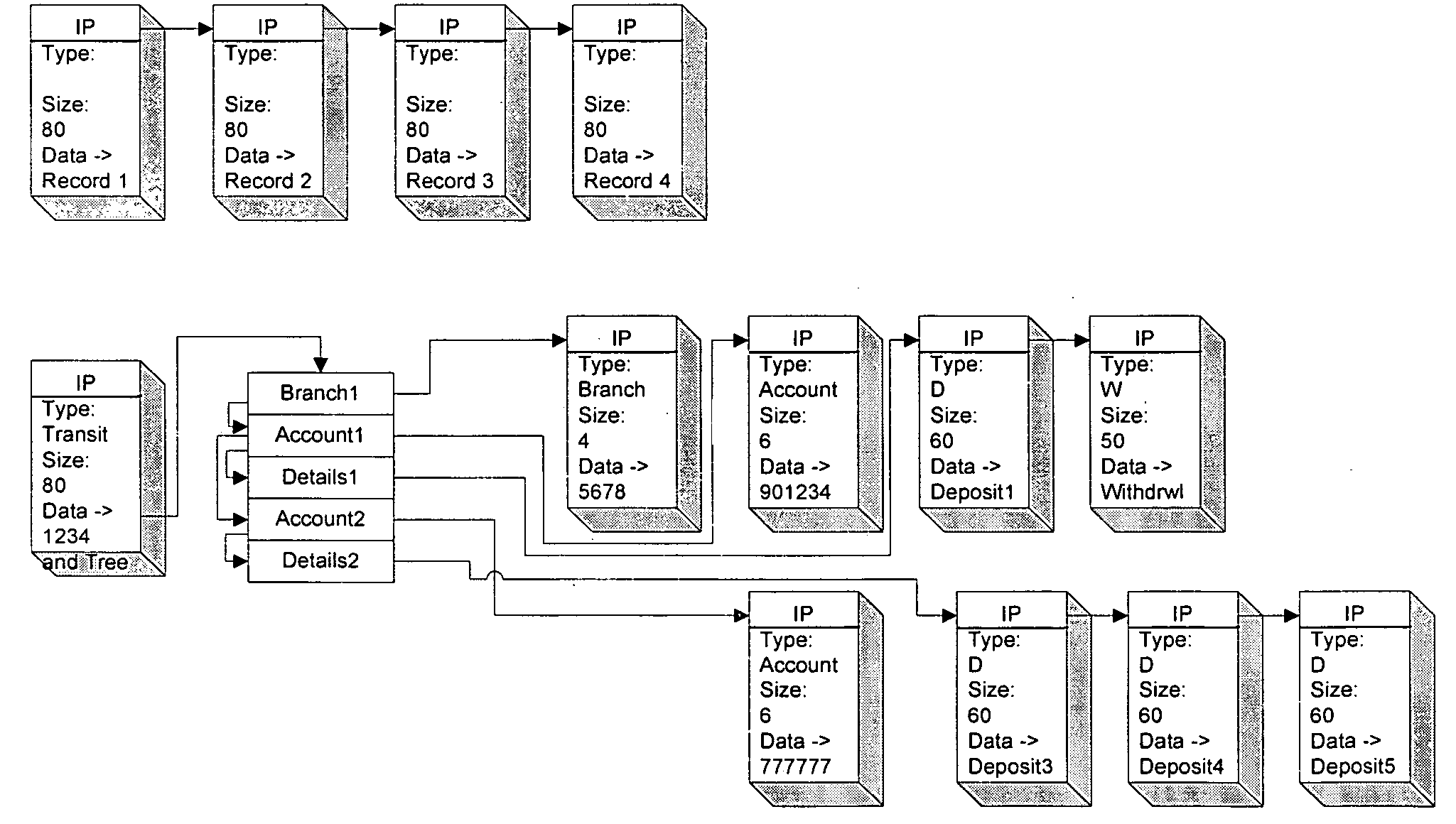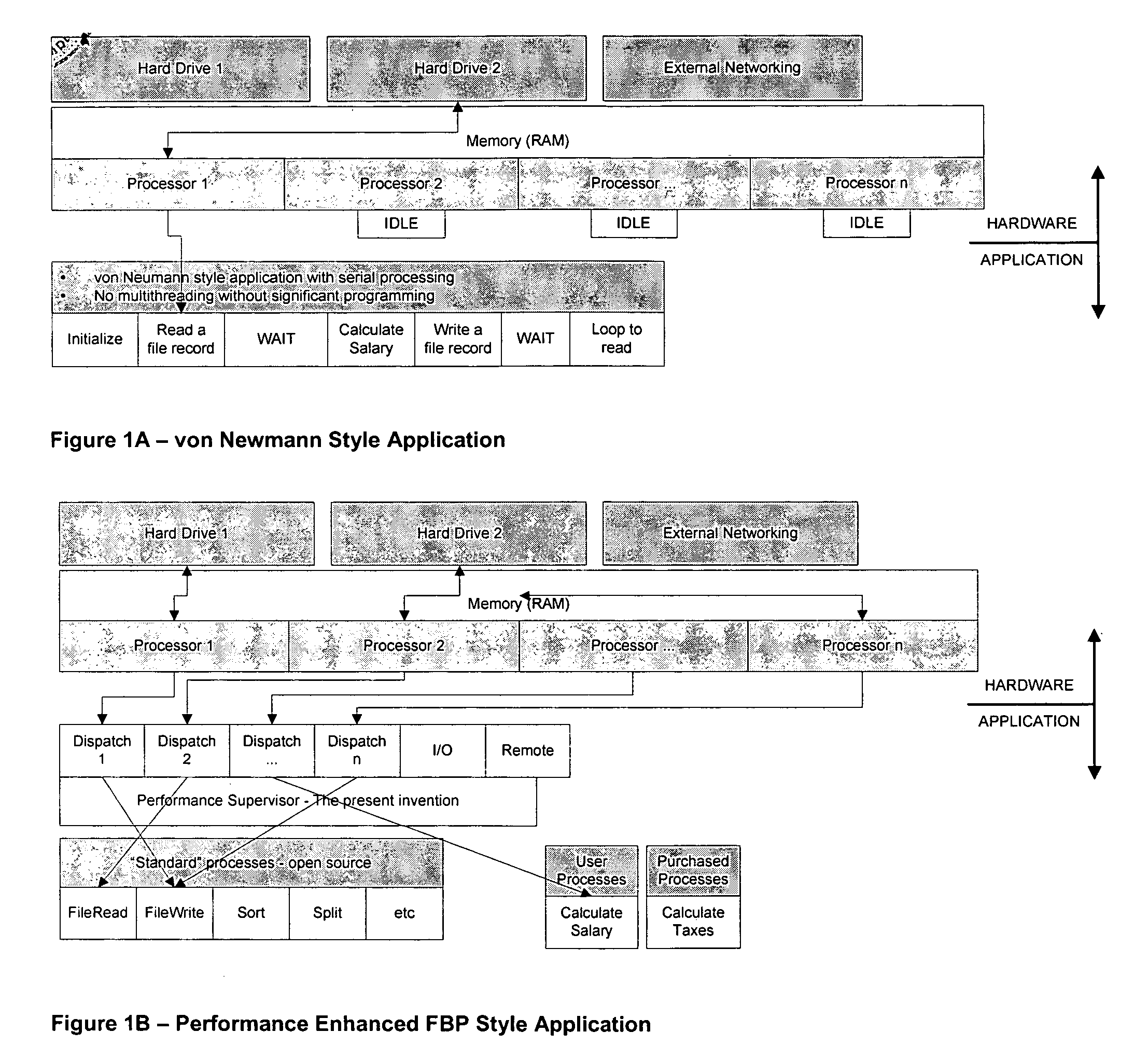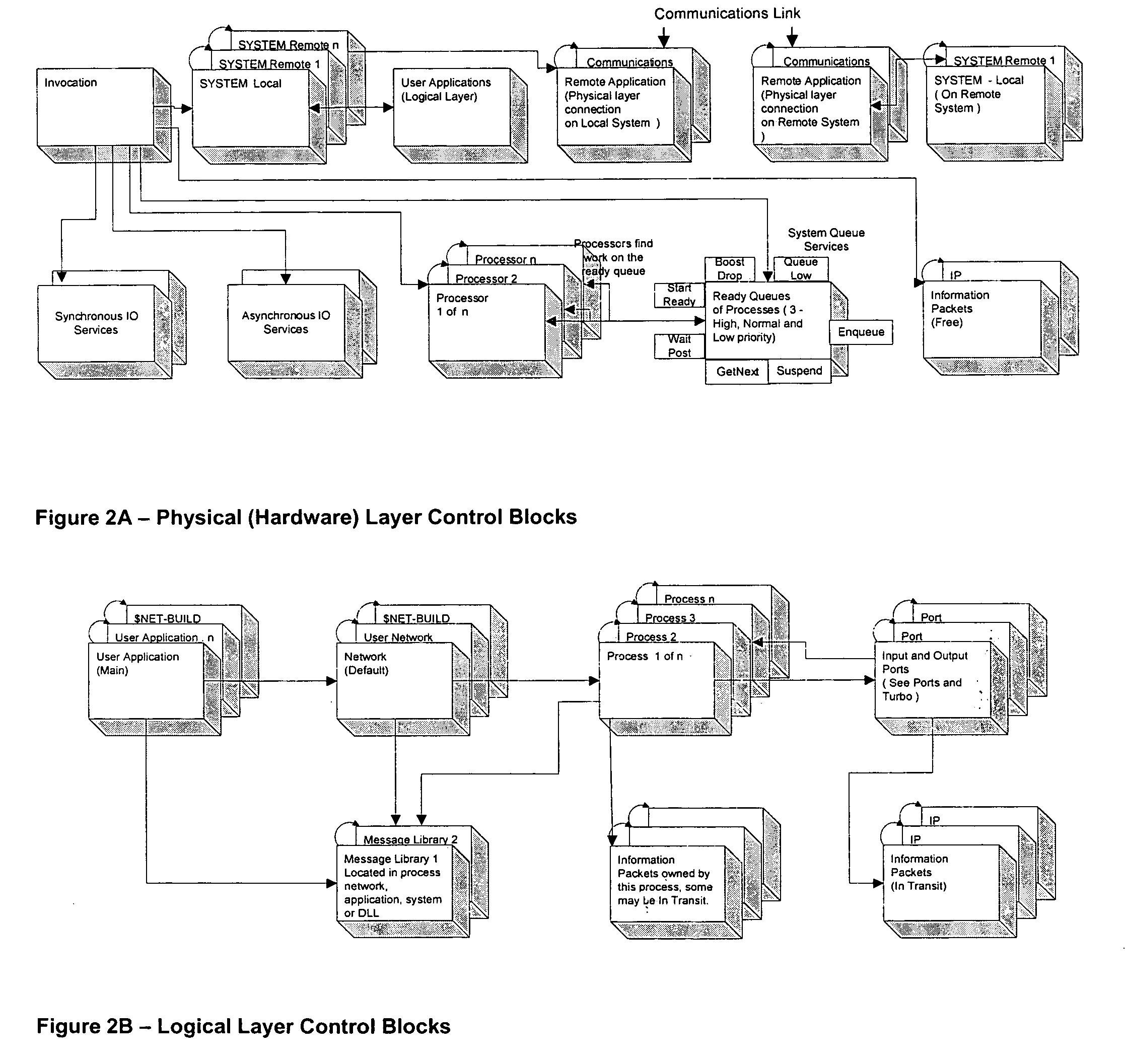Method and system for improving performance and scalability of applications that utilize a flow-based-programming methodology
- Summary
- Abstract
- Description
- Claims
- Application Information
AI Technical Summary
Benefits of technology
Problems solved by technology
Method used
Image
Examples
Embodiment Construction
[0102] 1.4.1 The Invention and Conventional Programming
[0103] With reference now to the figures, FIG. 1A-B depict a typical server environment with two processors, each capable of “hyper-threading” with the resulting appearance of 4 processors. FIG. 1A depicts a conventional program which is written in conventional von Neumann style; that being a single executable written in program centric style. The example application will request data, perform some operation on that data, and write it out for later processing.
[0104]FIG. 1B depicts an example program written to use this invention, enhancements to Flow Based Programming (FBP), comprising a supervisor, a selection of pre-written mini-applications (processes) that come with this invention, one purchased process, and one user written process. This application is data centric, in which the data and its flow are controlled by the supervisor according to network definitions. A process is given control when it has data ready on its inp...
PUM
 Login to View More
Login to View More Abstract
Description
Claims
Application Information
 Login to View More
Login to View More - R&D
- Intellectual Property
- Life Sciences
- Materials
- Tech Scout
- Unparalleled Data Quality
- Higher Quality Content
- 60% Fewer Hallucinations
Browse by: Latest US Patents, China's latest patents, Technical Efficacy Thesaurus, Application Domain, Technology Topic, Popular Technical Reports.
© 2025 PatSnap. All rights reserved.Legal|Privacy policy|Modern Slavery Act Transparency Statement|Sitemap|About US| Contact US: help@patsnap.com



